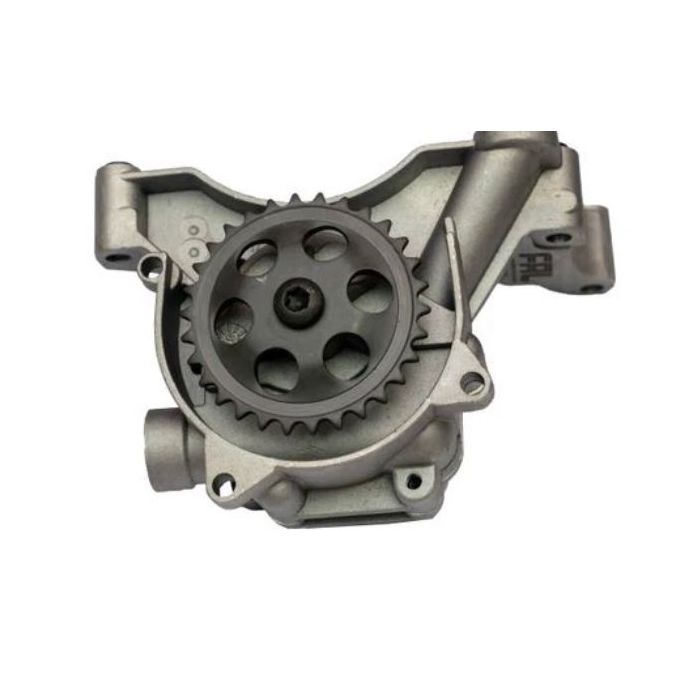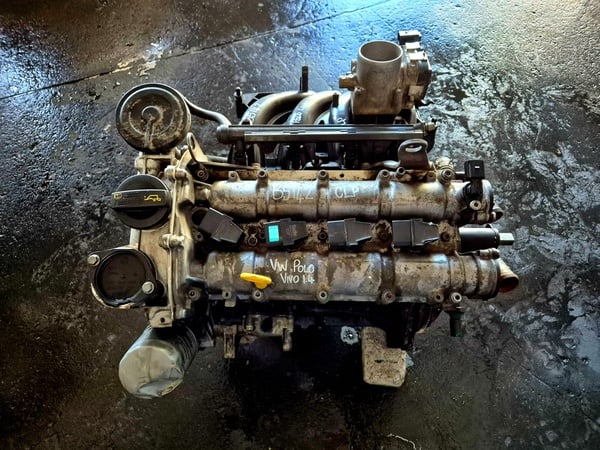Keep consistent power with a high-performance clp engine.
Wiki Article
Exactly How a Clp Engine Can Improve Efficiency in Different Industries
The advent of CLP engines marks a considerable shift in operational efficiency across various fields, driven by their capability to maximize gas usage and decrease downtime. Industries such as production and logistics stand to obtain considerably from their durable layout and constant power output, which promise to enhance procedures and boost performance. As organizations significantly focus on sustainability together with performance, the duty of CLP engines becomes even extra critical. What continues to be to be seen is how these innovations will shape the future landscape of commercial procedures and their influence on wider economic patterns (clp engine).Introduction of CLP Engines
CLP engines, or Continual Fluid Propellant engines, stand for a significant innovation in propulsion innovation, particularly for area applications. These engines utilize a continual feed system that enables the continual expulsion of propellant, bring about enhanced performance and efficiency compared to typical strong or hybrid propulsion systems. By preserving a consistent circulation of liquid propellant, CLP engines can accomplish extra exact thrust control, which is essential for maneuvering spacecraft in numerous objective scenarios.The style of CLP engines integrates innovative materials and cutting-edge fuel management systems. clp engine. This leads to decreased weight and raised dependability, essential variables for long-duration space goals. The continual operation lessens the risk of combustion instability, an usual difficulty in standard rocket engines.

Benefits in Manufacturing
The production of Continual Fluid Propellant (CLP) engines provides a number of noteworthy advantages that enhance both efficiency and cost-effectiveness. Among the key advantages is the structured production process, which reduces the intricacy connected with standard propulsion systems. By using liquid propellant, manufacturers can achieve better accuracy in engine performance, leading to maximized power outcome and reduced waste.Additionally, CLP engines promote a greater degree of modularity, permitting for less complicated combination into numerous production lines. This adaptability can significantly decrease lead times and enhance general operational adaptability. Using CLP technology additionally has a tendency to minimize the demand for substantial maintenance as a result of fewer relocating parts, which converts into reduced downtime and functional costs.

Applications in Logistics
Leveraging Constant Fluid Propellant (CLP) engines in logistics uses substantial benefits in functional performance and integrity. These engines give a durable remedy for numerous transportation address needs, enabling the her explanation seamless activity of items throughout huge ranges. The intrinsic style of CLP engines permits constant power output, which translates into smoother and extra foreseeable transport routines.One of the key applications of CLP engines in logistics is in sturdy products transport, where they can drive both ground and aerial vehicles. Their capacity to keep high efficiency under varying load problems makes certain that distribution timelines are satisfied, thus improving customer complete satisfaction. Additionally, CLP engines can be integrated right into automated logistics systems, facilitating real-time monitoring and maximizing route preparation.
In addition, the durability of CLP engines lowers upkeep downtime, allowing logistics companies to optimize their operational capacities. This is specifically useful in warehousing operations, where performance in managing and carrying goods is critical. As logistics proceeds to advance, the combination of CLP engines represents a forward-thinking strategy that not only improves efficiency however also sustains the market's growing needs for reliability and rate.
Effect On Energy Efficiency
Exactly How do Continuous Liquid Propellant (CLP) engines boost power efficiency in transport? CLP engines utilize a regular flow of liquid gas, optimizing burning procedures and preserving a secure thrust result. This layout minimizes power losses connected with standard combustion engines, where fuel distribution can vary and bring about inefficiencies.The continual procedure of CLP engines permits a more effective thermal cycle, causing higher certain impulse contrasted to conventional engines. clp engine. This equates to reduced fuel intake for the very same amount of job done, significantly reducing functional costs across different transport sectors, including aviation and maritime markets
Additionally, the capacity of CLP engines to maintain ideal efficiency under differing lots problems reduces the need for constant velocity and deceleration, further improving gas effectiveness. Improved power efficiency not only adds to set you back financial savings yet additionally brings about decrease greenhouse gas exhausts, lining up with international sustainability objectives.
Future Trends and Innovations
Arising advancements in Continual Liquid Propellant (CLP) engine technology pledge to transform the landscape Find Out More of transport effectiveness and sustainability. As industries pivot towards greener options, CLP engines stand at the leading edge, integrating innovative products and layout methods that improve performance while minimizing ecological effect.One of one of the most appealing patterns is the adoption of crossbreed systems that integrate CLP engines with renewable power resources. This synergy can maximize gas consumption and reduce exhausts, lining up with global sustainability objectives. Innovations in computational fluid characteristics (CFD) are assisting in the design of even more aerodynamically effective engines, leading to reduced drag and enhanced fuel effectiveness.
Furthermore, the growth of smart surveillance systems is readied to improve operational performances. These systems leverage information analytics and IoT technology to maximize engine performance in real-time, guaranteeing that the engines run within their most effective criteria.
As research remains to explore alternate propellant solutions-- such as biofuels and synthetic gas-- the future of CLP engines looks encouraging. By taking advantage of these innovations, markets can not just boost their efficiency however additionally contribute dramatically to a cleaner, more lasting future in transport.
Conclusion
To conclude, CLP engines stand for a substantial development in effectiveness throughout numerous industries. Their ability to enhance gas intake and reduce operational expenses, integrated with a continual feed system, boosts power result and operational reliability. The integration of sophisticated materials and less relocating components minimizes maintenance requirements, while positioning with sustainability objectives placements CLP engines as a pivotal technology for the future. Continued advancement in this area assures further improvements in efficiency and environmental performance.Report this wiki page